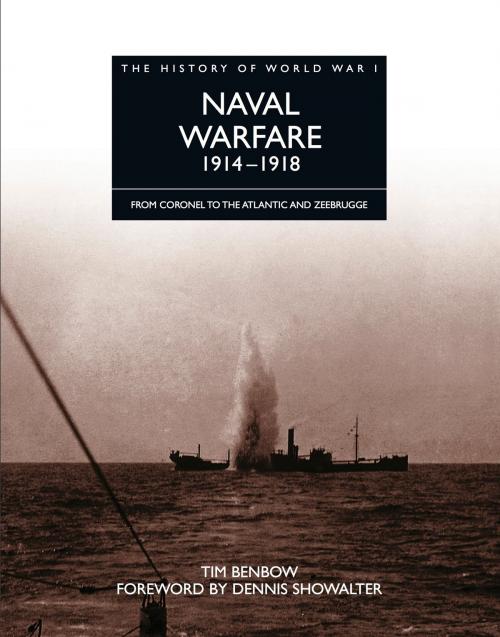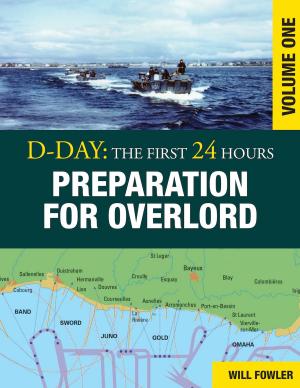History of World War I: Naval Warfare 1918–1918
From Coronel to the Atlantic and Zeebrugge
Nonfiction, History, Military, Naval, World War I, British| Author: | Tim Benbow | ISBN: | 9781908273123 |
| Publisher: | Amber Books Ltd | Publication: | December 15, 2009 |
| Imprint: | Amber Books | Language: | English |
| Author: | Tim Benbow |
| ISBN: | 9781908273123 |
| Publisher: | Amber Books Ltd |
| Publication: | December 15, 2009 |
| Imprint: | Amber Books |
| Language: | English |
The History of World War I series recounts the battles and campaigns that took place during the 'Great War'. From the Falkland Islands to the lakes of Africa, across the Eastern and Western Fronts, to the former German colonies in the Pacific, the World War I series provides a six-volume history of the battles and campaigns that raged on land, at sea and in the air.The struggle for naval supremacy helped create the conditions for the outbreak of World War I. After the coronation of Kaiser Wilhelm II, Germany's ambitions for its 'place in the sun' – in other words a greater influence in world affairs – sidelined the traditional and familiar rivalry between France and the British Empire. The naval arms race inspired by HMS Dreadnought may have captured the headlines, but the opening stages of the naval war were dominated by the threat from German cruisers stationed outside European waters, until they were hunted down and sunk by the Royal Navy, notably at the Battle of the Falkland Islands in 1914.Germany switched its focus to the U-boat, seeing it as a weapon capable of winning the war by starving Britain into surrender. Unrestricted submarine warfare led to the sinking of millions of tons of shipping, but it would also force the USA to enter the war on the Allied side in 1917. In the Mediterranean, the French fleet took the lead, while Austria-Hungary supported German actions. The Allied attempt in 1915 to use maritime power to break the strategic deadlock with an amphibious operation in the Dardanelles ultimately failed, although Allied sea power helped sustain the successful campaigns against the Ottoman Empire in the Middle East.What would prove to be the decisive naval engagement of the war took place in 1916 at the Battle of Jutland. Whilst the clash itself was inconclusive, the German High Seas Fleet would be all but confined to port for the rest of the war, handing the initiative to the Royal Navy. The resultant command of the seas allowed the Allies to carry fresh American armies and much-needed supplies to Europe in 1917.However, victory for the Allies was ultimately delivered by the naval economic blockade. By preventing the import of war materials and food, the fighting power and morale of the German armed forces was weakened. It was the mutiny of the High Seas Fleet in October 1918 that prompted the German Revolution and the subsequent abdication of the Kaiser.With the aid of over 300 black and white and colour photographs, complemented by full-colour maps, Naval Warfare provides a detailed guide to the background and conduct of World War I naval operations, describing the struggle to win control of the high seas around the globe.
The History of World War I series recounts the battles and campaigns that took place during the 'Great War'. From the Falkland Islands to the lakes of Africa, across the Eastern and Western Fronts, to the former German colonies in the Pacific, the World War I series provides a six-volume history of the battles and campaigns that raged on land, at sea and in the air.The struggle for naval supremacy helped create the conditions for the outbreak of World War I. After the coronation of Kaiser Wilhelm II, Germany's ambitions for its 'place in the sun' – in other words a greater influence in world affairs – sidelined the traditional and familiar rivalry between France and the British Empire. The naval arms race inspired by HMS Dreadnought may have captured the headlines, but the opening stages of the naval war were dominated by the threat from German cruisers stationed outside European waters, until they were hunted down and sunk by the Royal Navy, notably at the Battle of the Falkland Islands in 1914.Germany switched its focus to the U-boat, seeing it as a weapon capable of winning the war by starving Britain into surrender. Unrestricted submarine warfare led to the sinking of millions of tons of shipping, but it would also force the USA to enter the war on the Allied side in 1917. In the Mediterranean, the French fleet took the lead, while Austria-Hungary supported German actions. The Allied attempt in 1915 to use maritime power to break the strategic deadlock with an amphibious operation in the Dardanelles ultimately failed, although Allied sea power helped sustain the successful campaigns against the Ottoman Empire in the Middle East.What would prove to be the decisive naval engagement of the war took place in 1916 at the Battle of Jutland. Whilst the clash itself was inconclusive, the German High Seas Fleet would be all but confined to port for the rest of the war, handing the initiative to the Royal Navy. The resultant command of the seas allowed the Allies to carry fresh American armies and much-needed supplies to Europe in 1917.However, victory for the Allies was ultimately delivered by the naval economic blockade. By preventing the import of war materials and food, the fighting power and morale of the German armed forces was weakened. It was the mutiny of the High Seas Fleet in October 1918 that prompted the German Revolution and the subsequent abdication of the Kaiser.With the aid of over 300 black and white and colour photographs, complemented by full-colour maps, Naval Warfare provides a detailed guide to the background and conduct of World War I naval operations, describing the struggle to win control of the high seas around the globe.















